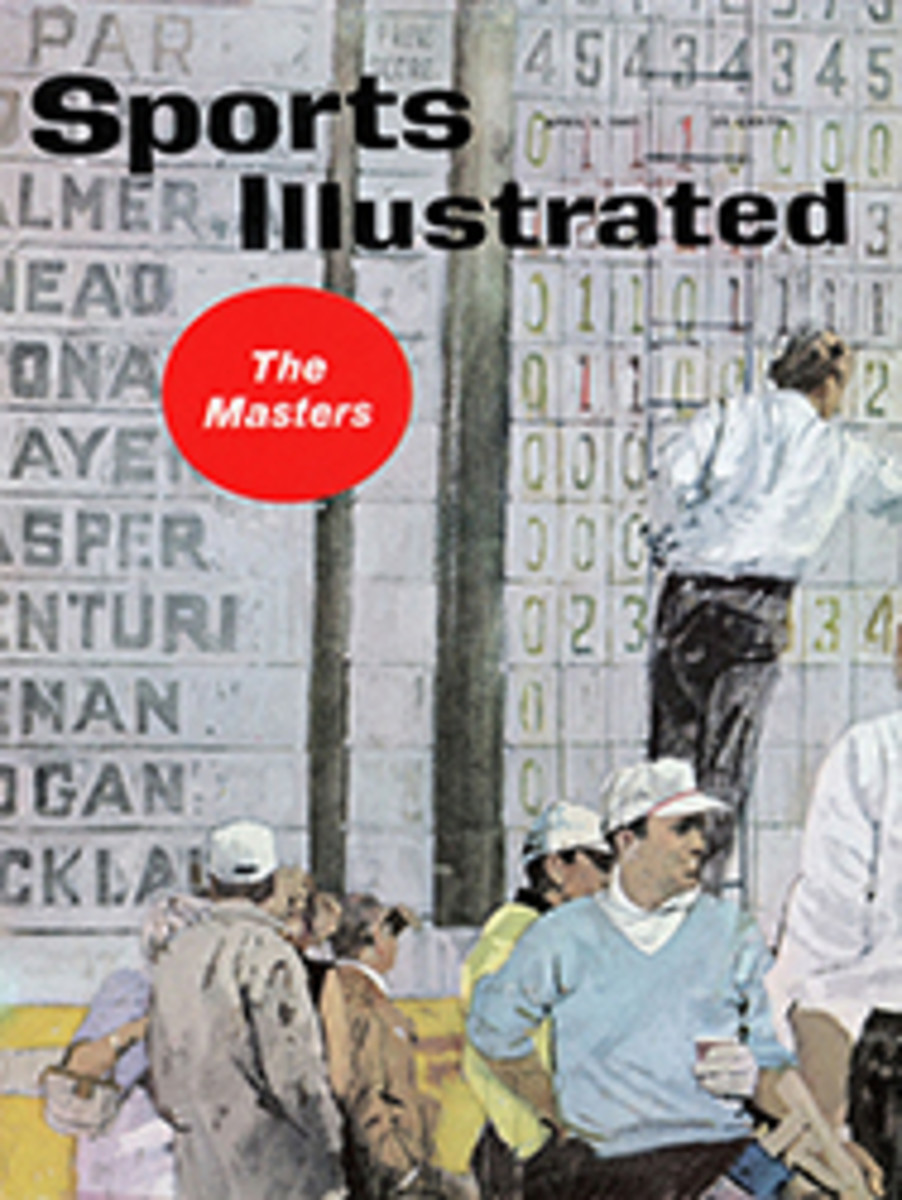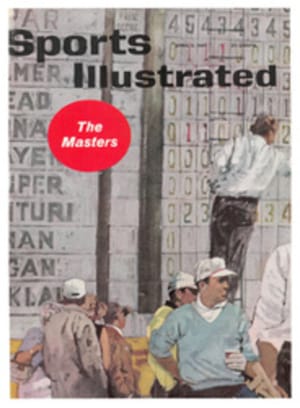
The day the coach played goalie
On April 7, 1928 Lester Patrick, 44 years old and silver-haired, stood beside the New York Ranger bench in the Montreal Forum, watching intently the moves of his blue-shirted players. Two years earlier he had come down from Victoria, B.C. to pioneer the organization of the Rangers as their manager-coach. As a player he had been an outstanding defenseman for 20 years on various teams throughout Canada but, except for brief comebacks the previous two seasons, he hadn't played regularly for six years.
The Rangers were playing the Montreal Maroons that night in the final round of the Stanley Cup playoffs. They had been shut out 2-0 two days before in the opener of the best-of-five series and had failed to score again in the first period of the second game. It was still a scoreless tie early in the second period when suddenly the puck smashed into Ranger Goalie Lorne Chabot's left eye. Minutes later, in the dressing room, a doctor lifted a blood-smeared towel from Chabot's face. "The eye is bleeding badly," he told Patrick, who had rushed from the bench. "Get yourself a new goaltender."
In such an emergency, it was then customary for the other team to permit the use of any available goaltender. Patrick knew that Alex Connell, the star goalie of the Ottawa Senators, was among the spectators in the Forum. "I'll use Connell to finish the game," he told Eddie Gerard, the manager-coach of the Maroons.
"Not so fast, Lester," Gerard shot back. "You're not going to use Connell in this game and beat us." Patrick then asked for permission to use a minor league goalie named Hugh McCormick, but he was turned down too.
In the Ranger dressing room a few minutes later, Patrick angrily told his players how the Maroons had vetoed both Connell and McCormick. "Somebody here will have to put the pads on," Patrick said. After a few seconds of silence Leo Bourgault, a squash-nosed defenseman, spoke up, "I'll doit, Lester." But Frank Boucher, the Ranger captain, and Right Winger Bill Cook protested. "Look, Lester," Boucher said, "if Leo goes in the net we'll be short a man. You've done everything in hockey, and you're still in pretty good shape. You can go in there yourself. We won't let them get a good shot at you."
Patrick shrugged his shoulders; there seemed nothing else to do. Chabot's skates and equipment fitted him perfectly. He jammed Chabot's black baseball cap on his head and stiffly skated onto the ice for a warmup.
As a player, Patrick had often gone into the net when his team's goalie was penalized. Once, he had cleared a shot and skated the length of the rink to score. But now, with nearly 30 pounds of equipment strapped to him, it was different. Awkwardly he tested the heavy, thick goalie's stick as the Rangers glided in easily and flicked soft shots at him. "Make sure you shoot right at him," Boucher had whispered to his teammates. "If you put one by him now it'll ruin his confidence."
At the other end of the ice, the maroon-and-white uniformed players smiled at the sight of Patrick. They were ready to strafe him. Before the playoffs began, the Maroon club directors had promised each player a $3,000 bonus, in addition to their usual playoff money, if they won the Cup. Gerard sensed his team's over-confidence. "It won't be as easy as it looks," he told his players. "They'll check like hell for Lester."
During the 40-minute delay Odie Cleghorn, the coach of the Pittsburgh team, had wandered into the Ranger dressing room. "Do me a favor,". Patrick had asked him. "Run the bench for me." Now, as the Rangers gathered around Cleghorn before the face-off, he tilted his black bowler and said, "Stay back to protect Lester. Don't let 'em get close. Wait for a break. If you can protect Lester one goal might win it."
Playing cautiously, Boucher and the Cook brothers hounded the Maroons. The defensemen, Taffy Abel and Ching Johnson, checked fiercely at mid-ice. As a result, the Maroons were forced to fire long, harmless shots, which Patrick easily stopped. The second period ended with the two teams still tied 0-0.
Two big goals
Thirty seconds after the start of the third period, however, Bill Cook suddenly scored for the Rangers. The goal loomed larger and larger as play went on, but then, with less than six minutes to play, the Maroons' Nels Stewart flipped a long shot along the ice. It skidded slowly toward Patrick. He dropped to both knees, but the puck slid between his pads for the tying goal. When the third period ended with the score 1-1, the game went into sudden-death overtime.
In the overtime the Rangers intensified their mid-ice defense. The Maroons took a few long shots, but Patrick blocked them easily. On one, a chest-high shot, Patrick took no chances. He dropped his stick and caught the puck with both hands. Then, at the seven-minute mark, Ching Johnson slid a pass up the ice to Boucher. He took it at full speed, skated around a defenseman and shot the puck behind Goalie Clint Benedict. The Stanley Cup playoff was tied at one game apiece. The Rangers on the ice rushed toward Patrick. The others swung over the boards to get to him. They all carried him off the ice on their shoulders.
The next day New York was given league permission to bring in Goalie Joe Miller, who had some NHL experience with the New York Americans. Lester Patrick retired again and, with Miller playing the last three games, the Rangers went on to win the 1928 Stanley Cup.

